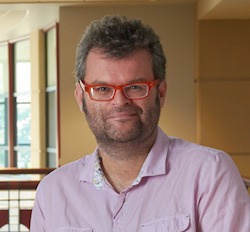Why do Apple stores feel like a high-end shopping experience? The technology retailer’s brick-and-mortar spaces are designed to look like art galleries, wide and spacious. Each item for sale is carefully displayed and priced like a work of art. But maybe Apple stores are getting a little too popular, a little too crowded, and this actually may be working against their machine-as-art, store-as-gallery idea.
Can the number of shoppers per square foot of a retail space actually have an effect on the amount of money that a consumer is willing to pay for a product? In a word, yes.

In a series of experiments, my colleagues Robin J. Tanner, associate professor of marketing at the Wisconsin School of Business; Ahreum Maeng, assistant professor of marketing at the University of Kansas School of Business; and I found that when retail spaces are less densely populated with shoppers, people place a higher value on products than they do on identical items found in a more densely populated shopping environment.
In fact, our experiments consistently found that when the number of shoppers in the store goes from two to 15 to 30, the price shoppers are willing to pay drops significantly.
One explanation is both sociological and psychological. First, at least in the West, people generally associate greater social densities with lower social status. Put simply, richer people get more space than poorer people. (Think: houses, offices, airlines, etc.) Space has social and economic value. When stores are more crowded, consumers tend to assume that the other customers are of a lower social class, have lower incomes, and, by association, the products in the store seem to be of a lesser value. Crowds generate unconscious inferences of lower social status and lower object value.

But don’t retailers want crowded stores with people clamoring to buy their brands? Our research suggests that crowds are not always good for retail sales, especially where price levels are concerned. Others have speculated that crowds at Apple stores actually may be off-putting to some of their best high-end consumers.
Recent requirements for in-store appointments are an attempt at social de-cluttering. After all, other high-end retailers reduce social density by requiring shoppers to make appointments to enter, or at least to use the store’s full range of services. It’s a way to convey social status by pushing the social density of the store down and pushing the prices up.
The implications of the effects of social density on retail are far ranging and potentially troublesome. For example, if our research is correct, then patients who wait to see a doctor in less crowded waiting rooms should believe they receive better value for their money. Could better medicine result from more spacious waiting rooms?
As a consumer, you should be aware that fancy stores are designed to be seductive and to make you feel special in order to get you to pay more for a given item. I know I’ve spent too much money in well-designed stores. Try to be aware of price no matter how much you enjoy the atmosphere inside the store. Walk outside the store, get back on the crowded street, and think before you buy.
For more on this topic see our paper, “Turning to Space: Social Density, Social Class, and the Value of Things in Stores,” in the Journal of Consumer Research.
Tags: